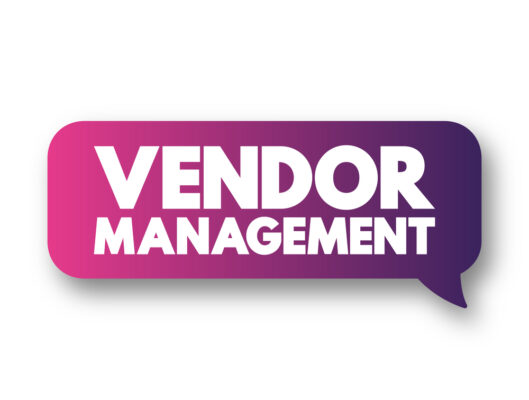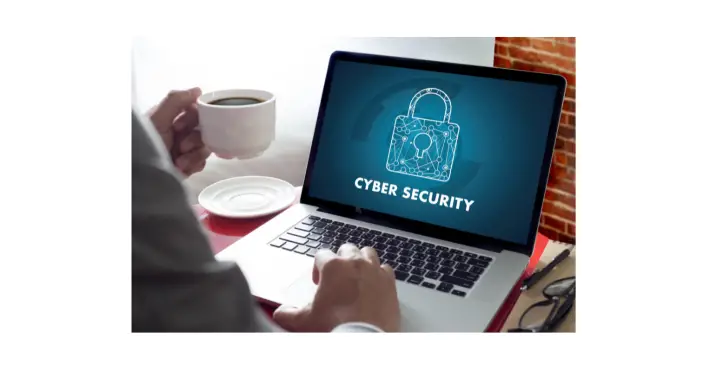The NIST Cybersecurity Framework provides a comprehensive, flexible, and repeatable approach for organizations to manage cybersecurity risk.
The framework consists of three main components: the Core, Implementation Tiers, and Profiles. One of the key components of the framework is the identification and monitoring of Key Risk Indicators (KRIs).
KRIs are metrics used to measure the level of risk associated with a particular process or activity. They are used to provide early warning signs of potential threats and vulnerabilities, allowing organizations to take proactive measures to mitigate the risk.
The NIST Cybersecurity Framework includes 11 KRIs that are critical to helping organizations identify and manage cybersecurity risks.
In this article, we will explore the 11 Key Risk Indicators in the NIST Cybersecurity Framework and provide insights on how organizations can use them to improve their cybersecurity posture.
Organizations can reduce the risk of cyber attacks by understanding KRIs and their uses.
Understanding the NIST Cybersecurity Framework
The NIST Cybersecurity Framework is a set of guidelines, standards, and best practices designed to help organizations manage and reduce cybersecurity risk.
It was developed by the National Institute of Standards and Technology (NIST) in response to Executive Order 13636, which called for the development of a voluntary framework to improve cybersecurity across critical infrastructure sectors.
The Framework is divided into three parts: the Framework Core, the Framework Implementation Tiers, and the Framework Profiles.
The Framework Core consists of five functions: Identify, Protect, Detect, Respond, and Recover. These functions are further broken down into categories and subcategories that provide a detailed roadmap for managing cybersecurity risk.
The Framework Implementation Tiers describe the level of cybersecurity risk management practices that an organization has implemented.
There are four tiers: Partial, Risk Informed, Repeatable, and Adaptive. Each tier builds upon the previous one, with the Adaptive tier representing the highest level of maturity.

The Framework Profiles allow organizations to customize the Framework to their specific needs and requirements. They provide a way for organizations to identify which Framework functions, categories, and subcategories are most relevant to their business and to prioritize their cybersecurity efforts accordingly.
The Framework is designed to be flexible and adaptable and can be used by organizations of all sizes and types. It is intended to be a living document that evolves over time as new threats and technologies emerge.
The Framework is not intended to replace existing standards and policies but rather to complement them and provide a common language for cybersecurity risk management.
NIST Cybersecurity Framework is a valuable tool for organizations looking to improve their cybersecurity posture. Organizations can better manage cybersecurity risks by following the Framework’s guidelines and best practices, protecting themselves against cyber threats.
Identifying Key Risk Indicators
Identifying key risk indicators (KRIs) is an essential part of managing cybersecurity risks. KRIs are specific metrics or data points that help organizations understand the level of risk they face in their environment.
These metrics can be used to monitor the effectiveness of security controls, identify vulnerabilities, and measure the impact of cyber threats.
The NIST Cybersecurity Framework (CSF) provides a comprehensive approach to identifying and managing cybersecurity risks. The framework’s Identify function helps organizations understand their cybersecurity risks by identifying the systems, assets, data, and capabilities that support their business objectives.
Once these elements are identified, organizations can use the Risk Management Framework (RMF) to assess and manage their cybersecurity risks.
The first step in identifying key risk indicators is to develop a risk register that includes all the systems, assets, data, and capabilities that support the organization’s business objectives.
The risk register should include a description of each element, its criticality to the organization, and its potential impact if compromised.
Once the risk register is developed, organizations can use a variety of techniques to identify key risk indicators. One approach is to use a top-down approach, where senior management identifies the most critical risks facing the organization and then works with subject matter experts to identify the key risk indicators associated with those risks.
Another approach is to use a bottom-up approach, where subject matter experts identify the key risk indicators associated with specific systems, assets, data, and capabilities.
Organizations can use a variety of metrics to identify key risk indicators, including the number of security incidents, the severity of those incidents, the number of vulnerabilities identified, and the time to remediate those vulnerabilities.
Other metrics that can be used include the number of security controls in place, the effectiveness of those controls, and the level of compliance with security policies and procedures.
Identifying key risk indicators is an essential part of managing cybersecurity risks. Organizations can use a variety of techniques to identify these indicators, including developing a risk register, using a top-down or bottom-up approach, and using a variety of metrics.
Organizations can proactively manage cybersecurity risks by identifying and monitoring key risk indicators.
Protecting Against Cybersecurity Risks
Protecting against cybersecurity risks is a critical aspect of any organization’s cybersecurity risk management program. The NIST Cybersecurity Framework provides a comprehensive set of guidelines and best practices that organizations can use to protect their data, systems, and networks from cybersecurity attacks.
One of the key components of protecting against cybersecurity risks is implementing effective controls. The NIST Cybersecurity Framework provides a set of control enhancements that organizations can use to improve their cybersecurity posture.
These control enhancements are designed to address specific areas of cybersecurity risk, such as access control, data security, and system integrity.
Another important aspect of protecting against cybersecurity risks is staying up-to-date with the latest cybersecurity threats and best practices.
Organizations should regularly review their cybersecurity risk management program and make updates as necessary to ensure that they are adequately protected against the latest threats.
In addition to implementing effective controls and staying up-to-date with the latest threats and best practices, organizations should also ensure that their employees are trained on cybersecurity best practices.
This includes providing training on how to identify and respond to cybersecurity attacks, as well as how to protect sensitive data and systems.
Protecting against cybersecurity risks requires a comprehensive approach that includes implementing effective controls, staying up-to-date with the latest threats and best practices, and providing employees with the training they need to protect against cybersecurity attacks effectively.
Organizations can significantly reduce cybersecurity risk by following best practices to protect their data, systems, and networks from cyber threats.
Detecting and Responding to Cybersecurity Threats
Detecting and responding to cybersecurity threats is crucial to the NIST Cybersecurity Framework. Organizations must be able to detect and respond to threats promptly and effectively to minimize the impact of cyber attacks.
To detect cybersecurity threats, organizations should implement a variety of detection processes, such as intrusion detection systems (IDS), security information and event management (SIEM) systems, and vulnerability scanners. These processes can help organizations identify systems vulnerabilities and detect cybersecurity attacks.
In addition to these processes, organizations should also collect and analyze logs from their systems to identify unusual activity that may indicate a cybersecurity attack.
Organizations can proactively detect and mitigate potential threats by monitoring logs.
When a cybersecurity attack is detected, organizations must respond quickly and effectively. This involves identifying the nature and scope of the attack, containing the attack, and mitigating the damage.
Organizations should have a well-defined incident response plan in place that outlines the steps to be taken in the event of a cybersecurity attack.
Organizations should conduct regular training and exercises to test their response capabilities to ensure that their incident response plan is effective.
This will help them identify any weaknesses in their plan and improve their ability to respond to cybersecurity threats.
Detecting and responding to cybersecurity threats is a critical component of the NIST Cybersecurity Framework. By implementing effective detection processes, monitoring logs, and having a well-defined incident response plan, organizations can minimize the impact of cybersecurity attacks and protect their systems and data from harm.
Recovery and Improvement After a Cybersecurity Event
Recovery and improvement after a cybersecurity event is a critical aspect of maintaining a strong cybersecurity posture. The NIST Cybersecurity Framework provides guidance on how organizations can recover from a cybersecurity event and implement improvements to their cybersecurity program.
The recovery phase involves restoring systems and data to their pre-incident state. Organizations should have a comprehensive recovery plan in place to ensure that they can quickly and effectively respond to a cybersecurity event.
This plan should include identifying and prioritizing organization resources, defining key milestones for recovery efforts, implementing effective incident management policies, developing a comprehensive recovery communications plan, and continuous improvement.
One of the key best practices for recovery is to conduct a post-incident review. This review should identify what worked well during the recovery process and what could be improved.
Organizations should use this information to update their recovery plan and make improvements to their cybersecurity program.
Improvements to the cybersecurity program should be based on the lessons learned from the cybersecurity event. Organizations should identify areas where they can improve their cybersecurity posture and implement changes to prevent similar incidents from occurring in the future.
This could include implementing additional security controls, providing additional training to employees, or updating policies and procedures.
Overall, recovery and improvement after a cybersecurity event are critical to maintaining a strong cybersecurity posture.
Organizations should have a comprehensive recovery plan in place and use lessons learned to make improvements to their cybersecurity program.
Organizations can reduce the risk of future cybersecurity incidents by implementing best practices and making changes.
Privacy Considerations in the NIST Cybersecurity Framework
The NIST Cybersecurity Framework (CSF) is a risk-based approach to improving cybersecurity posture. While the framework primarily focuses on cybersecurity, it also includes privacy considerations.
Privacy is critical to cybersecurity, and organizations must consider privacy risks when implementing the CSF.
The NIST Privacy Framework (PF) provides a set of privacy protection strategies and best practices that organizations can use to manage privacy risks.
The PF complements the CSF and helps organizations integrate privacy risk management into their cybersecurity programs.
The PF provides a common language for organizations to communicate about privacy risks and helps align privacy practices with legal and regulatory requirements.
The CSF includes several key risk indicators (KRIs) that organizations can use to monitor and measure their cybersecurity posture. Some of these KRIs are relevant to privacy risk management, such as:
- PR.IP-1: Baseline privacy requirements are established and documented.
- PR.IP-2: Privacy risks are identified, assessed, and documented.
- PR.IP-3: Privacy risk responses are implemented and maintained.
- PR.IP-4: The effectiveness of privacy risk responses is monitored.
Organizations can use these KRIs to assess their privacy risk management practices and identify areas for improvement.
For example, if an organization has not established baseline privacy requirements (PR.IP-1), it may be more vulnerable to privacy risks.
Privacy considerations are an essential component of the NIST Cybersecurity Framework. Organizations must consider privacy risks when implementing the framework and use the NIST Privacy Framework to manage privacy risks.
The CSF includes several key risk indicators that organizations can use to assess their privacy risk management practices and improve their cybersecurity posture.
Integrating privacy risk management is crucial for organizations to protect sensitive data and comply with regulations.

Supply Chain Risks in Cybersecurity
The global supply chain places companies and consumers at cybersecurity risk because of the many sources of components and software that often compose a finished product.
A device may have been designed in one country and built in another using multiple components manufactured in various parts of the world. This complexity creates a challenge for organizations to manage cybersecurity risks associated with their supply chain.
The National Institute of Standards and Technology (NIST) Cybersecurity Framework (CSF) provides a framework for managing cybersecurity risks related to the supply chain.
The framework consists of five core functions: Identify, Protect, Detect, Respond, and Recover. The Identify function includes identifying risks associated with the supply chain, while the Protect function includes implementing appropriate safeguards to manage those risks.
The Cybersecurity Supply Chain Risk Management (C-SCRM) is a process that organizations can use to identify, assess, and manage cybersecurity risks associated with their supply chain.
The C-SCRM process includes identifying critical components, assessing the cybersecurity risks associated with those components, and implementing appropriate mitigation strategies.
Organizations can no longer protect themselves by simply securing their own infrastructures since their electronic perimeter is no longer meaningful.
Threat actors intentionally target the suppliers of more cyber-mature organizations to take advantage of the weakest link. Therefore, it is essential for organizations to have a comprehensive understanding of their supply chain and the associated cybersecurity risks.
Supply chain risks in cybersecurity are a significant concern for organizations. The NIST Cybersecurity Framework and C-SCRM process provide a comprehensive approach to managing these risks.
Identifying critical components, assessing cybersecurity risks, and implementing appropriate mitigation strategies, organizations can effectively manage supply chain risks and protect themselves and their customers from cyber threats.
Roles and Responsibilities in Cybersecurity Risk Management
In cybersecurity risk management, it is crucial to have clearly defined roles and responsibilities for all stakeholders involved. This ensures that everyone understands their duties and can work together effectively to manage risks.
The National Institute of Standards and Technology (NIST) Cybersecurity Framework provides guidance on the roles and responsibilities of different entities in cybersecurity risk management.
Organizations
Organizations are responsible for establishing and implementing a cybersecurity risk management program. This includes identifying and assessing risks, selecting and implementing security controls, and monitoring and reporting on the effectiveness of the program.
The organization should also establish policies and procedures for cybersecurity risk management and ensure that all employees are aware of their roles and responsibilities.
Roles
Different roles within the organization have specific responsibilities in cybersecurity risk management. For example, the Chief Information Security Officer (CISO) is responsible for overseeing the cybersecurity risk management program, ensuring that it is aligned with the organization’s goals and objectives, and reporting to senior management on the effectiveness of the program.
The IT department is responsible for implementing security controls, while the legal department is responsible for ensuring compliance with relevant laws and regulations.
Responsibilities
Each role has specific responsibilities in cybersecurity risk management. For example, the CISO is responsible for identifying and assessing risks, selecting and implementing security controls, and monitoring and reporting on the effectiveness of the program.
The IT department is responsible for implementing security controls, while the legal department is responsible for ensuring compliance with relevant laws and regulations.
Stakeholders
Stakeholders in cybersecurity risk management include employees, customers, shareholders, and partners. Each stakeholder has a role to play in managing cybersecurity risks.
For example, employees should be trained on cybersecurity best practices and be aware of their role in protecting the organization’s assets.
Customers should be informed of the organization’s cybersecurity policies and procedures and encouraged to report suspicious activity.
External Stakeholders
External stakeholders, such as regulators, auditors, and vendors, also have a role to play in cybersecurity risk management.
Regulators may require organizations to comply with specific cybersecurity standards or regulations. Auditors may review the organization’s cybersecurity risk management program to ensure that it is effective. Vendors may provide security products or services that can help the organization manage cybersecurity risks.
Clearly defined roles and responsibilities are essential for effective cybersecurity risk management. Organizations should establish policies and procedures for cybersecurity risk management and ensure that all stakeholders understand their roles and responsibilities.
Effective management of cybersecurity risks and protection of organizational assets can be achieved when all stakeholders work together.
Regulations and Standards in Cybersecurity
The National Institute of Standards and Technology (NIST) is a non-regulatory agency of the United States Department of Commerce that develops cybersecurity standards, guidelines, and best practices.
NIST’s cybersecurity framework (CSF) is a voluntary framework that provides organizations with a common language for managing cybersecurity risks. The CSF is designed to help organizations of all sizes and types to manage and reduce their cybersecurity risks.
NIST Special Publication (SP) 800-53 provides a catalog of security and privacy controls for federal information systems and organizations. The controls are based on a risk management framework (RMF) that provides a structured, repeatable process for managing cybersecurity risks.
The RMF is a six-step process that includes preparation, categorization, selection, implementation, assessment, and authorization.
NISTIR 8286 provides guidance on integrating privacy and cybersecurity risk management. The document provides a methodology for identifying, assessing, and managing privacy risks and aligning them with cybersecurity risks.
In addition to NIST, there are other regulations, industry standards, and guidelines that organizations must comply with. The Department of Homeland Security (DHS) provides guidance on cybersecurity for critical infrastructure sectors.
Applicable laws and regulations, such as the Health Insurance Portability and Accountability Act (HIPAA) and the General Data Protection Regulation (GDPR), also require organizations to implement cybersecurity controls to protect sensitive data.
Organizations must stay up-to-date with the latest regulations, standards, and guidelines to ensure that they are effectively managing their cybersecurity risks.
Organizations can reduce risks and improve their overall cybersecurity posture by following established frameworks, such as NIST’s CSF and RMF.
NIST Framework Implementation Examples
The NIST Cybersecurity Framework provides organizations with a flexible, risk-based approach to managing cybersecurity risks. The Framework is composed of three parts: the Framework Core, the Framework Implementation Tiers, and the Framework Profiles.
The Framework Core is a set of cybersecurity activities, outcomes, and informative references that are common across critical infrastructure sectors. The Framework Implementation Tiers describe the degree to which an organization’s cybersecurity risk management practices exhibit the characteristics defined in the Framework.
The Framework Profiles enable organizations to establish a roadmap for reducing cybersecurity risk that is aligned with organizational goals and objectives.
To help organizations implement the Framework, NIST provides a set of Implementation Examples that illustrate how the Framework Core can be applied to different sectors and types of organizations.
The Implementation Examples are organized according to the Framework Core Functions: Identify, Protect, Detect, Respond, and Recover.
Each Implementation Example provides a detailed description of how a particular organization has implemented the Framework’s Core Functions, including the activities, outcomes, and informative references that were used.
For example, the Implementation Example for the Healthcare Sector describes how a healthcare organization can use the Framework Core to manage cybersecurity risks associated with electronic health records (EHRs).
The Implementation Example includes a table that maps the Framework’s Core Functions to specific EHR-related cybersecurity risks and a list of activities and outcomes that the organization can use to manage these risks. The Implementation Example also includes informative references to other NIST publications that provide additional guidance on EHR cybersecurity.
Another Implementation Example is the Manufacturing Sector Profile, which describes how a manufacturing organization can use the Framework to manage cybersecurity risks associated with industrial control systems (ICSs).
The Profile includes a set of cybersecurity objectives that are specific to the manufacturing sector, as well as a list of activities and outcomes that the organization can use to achieve these objectives. The Profile also includes informative references to other NIST publications that provide additional guidance on ICS cybersecurity.
The NIST Framework Implementation Examples provide organizations with a valuable resource for understanding how the Framework can be applied to their specific sector or type of organization.
Organizations can develop a tailored cybersecurity risk management program by following Implementation Examples.

Future Trends in Cybersecurity Risk Management
As the world becomes increasingly digital, the importance of cybersecurity risk management continues to grow. With the rise of the Internet of Things (IoT) and operational technology (OT), organizations are facing new and complex challenges in securing their systems and data.
Here are a few future trends in cybersecurity risk management that organizations should be aware of:
1. Increased Focus on Enterprise Risk Management (ERM) Programs
ERM programs are becoming more important as organizations seek to manage risk across all areas of their business. In integrating cybersecurity risk management into their ERM programs, organizations can better understand the impact of cyber threats on their overall risk profile.
2. Greater Emphasis on Key Risk Indicators (KRIs)
KRIs are metrics that can help organizations identify potential cyber threats before they become major problems. By tracking KRIs, organizations can quickly identify trends and patterns that may indicate a breach or other security issue.
3. More Robust Risk Assessments
As cyber threats become more sophisticated, risk assessments must also become more robust. This includes not only assessing the risk of a breach or attack, but also the potential impact of such an event on the organization’s operations, reputation, and bottom line.
4. Increased Collaboration between IT and Business Units
Cybersecurity risk management is no longer just an IT issue – it is a business issue. As such, IT and business units must work together more closely to identify and manage cyber risk.
This includes developing clear policies and procedures and ensuring that all employees are aware of their role in protecting the organization’s systems and data.
5. Focus on Emerging Technologies
As new technologies emerge, organizations must proactively identify and manage associated cyber risks. This includes not only the IoT and OT but also emerging technologies such as artificial intelligence, blockchain, and quantum computing.
Organizations can safeguard their long-term business success by taking proactive measures to manage cybersecurity risks.

Chris Ekai is a Risk Management expert with over 10 years of experience in the field. He has a Master’s(MSc) degree in Risk Management from University of Portsmouth and is a CPA and Finance professional. He currently works as a Content Manager at Risk Publishing, writing about Enterprise Risk Management, Business Continuity Management and Project Management.


